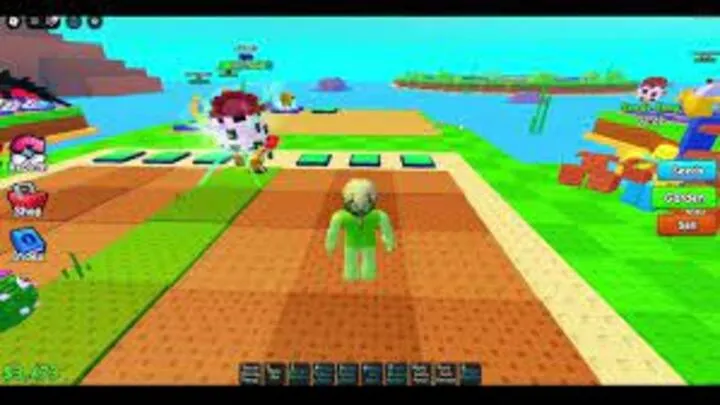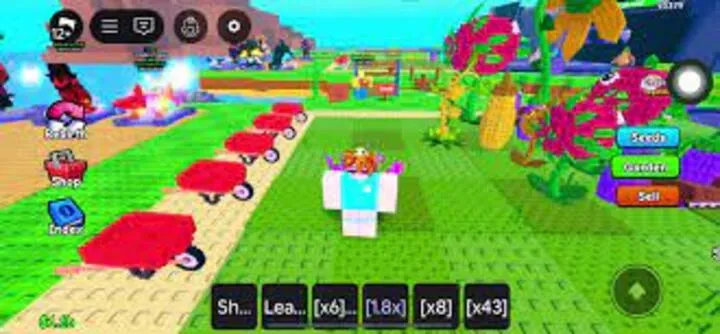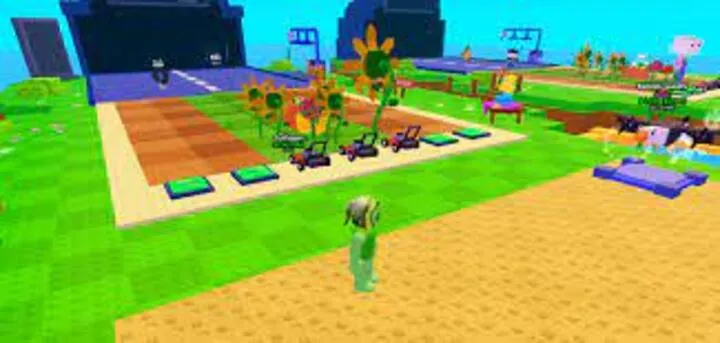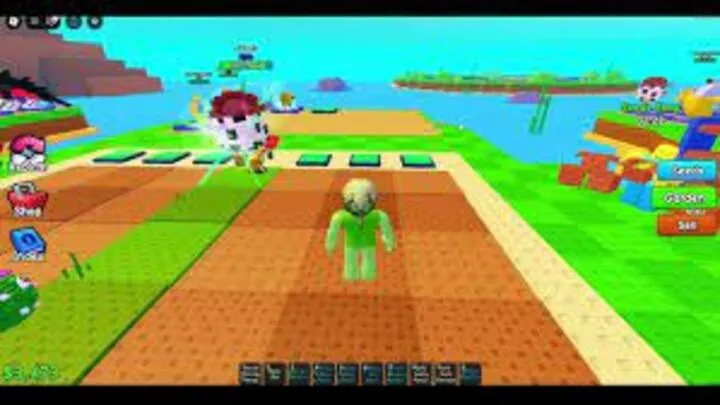Introduction
In the decaying world of Plants vs Brainrot, survival isn’t about brute strength — it’s about sustainability. When every seed, drop of sunlight, and drop of purified water counts, knowing how to farm resources efficiently becomes the difference between thriving and extinction. The forest of decay constantly drains life, mutating your plants and corrupting the soil, making it harder to maintain long-term growth.
This guide dives deep into the resource farming systems of Plants vs Brainrot, explaining where to find essential materials, how to balance growth with defense, and how to protect your harvest from corruption. From managing sunlight conversion and rot-resistant soil to uncovering hidden resource hotspots, this is your ultimate handbook for surviving the apocalypse with a blooming garden.
1. Understanding the Resource Ecosystem
1.1 The Cycle of Growth and Decay

In Plants vs Brainrot, resources aren’t static. Every harvest feeds into a global ecosystem that’s constantly changing. When you harvest too aggressively, the rot retaliates — spreading spores that infect nearby tiles.
- Balanced harvesting ensures the land remains fertile.
- Overharvesting triggers mutation events and soil corruption.
1.2 Key Resource Types
You’ll need to master four major resource types:
- Sunlight Energy: fuels plant growth and activates purifiers.
- Pure Water: cleanses soil and supports healing crops.
- Spore Extracts: used for mutations and crafting special fertilizers.
- Bio Nutrients: harvested from fallen enemies and decayed flora.
Understanding how these interact is the first step toward total control of your garden’s ecosystem.
2. Sunlight Farming Techniques
2.1 Maximizing Solar Output
Sunlight is your most important renewable resource. Build Solar Bloomers and Reflective Leaves to boost light collection efficiency. Position these in open, high-altitude areas for maximum yield.
- Avoid planting solar collectors near corrupted regions — rot energy disrupts their absorption cycle.
2.2 Energy Storage and Distribution
Later in the game, construct Light Wells, which store sunlight and redistribute it during cloudy or corrupted days. Combining Light Wells with Photosynthetic Towers allows full automation of energy management.
The key is redundancy — always maintain at least three independent light sources to ensure sustainability even during Blood Rot storms.
3. Water Management and Purification
3.1 The Role of Pure Water
Corruption spreads most easily through water systems. Rivers can carry rot spores across your map, poisoning multiple crops in one cycle. Purification is mandatory.
Build Aqua Purifiers at every major water source. These structures remove corruption but require a steady supply of sunlight and bio nutrients to operate.
3.2 Harvesting Rainwater and Mist
Rain isn’t always safe — rot storms contaminate rainfall. To counter this, construct Mist Nets in clean zones to capture untainted vapor. Combined with Condensation Towers, this creates a self-sufficient water loop.
Proper water management ensures your crops remain healthy, even when the forest turns toxic.
4. Soil Regeneration and Crop Rotation
4.1 The Hidden Decay Mechanic
Each tile of soil in Plants vs Brainrot has a rot resistance rating. Repeated planting reduces this value until the ground becomes unusable. You must rotate crops to restore fertility.
4.2 Crop Rotation Patterns
Use a three-phase rotation for optimal yield:
- Nutrient Crops (e.g., Root Pods) to restore minerals.
- Defense Crops (e.g., Shellbark) to fortify the area.
- High-Yield Crops (e.g., Sunfruit) for harvest.
This strategy ensures a consistent balance between production and sustainability.
5. Farming Spore Extracts
5.1 Controlled Mutation Harvesting

Spore Extracts are valuable but dangerous to collect. Instead of waiting for random corruption, use Spore Pods to generate controlled infection zones.
- Deploy purifiers nearby to contain the outbreak.
- Harvest extracts before mutation spreads uncontrollably.
5.2 Spore Conversion Devices
Advanced players can build Rot Reactors — structures that transform excess corruption into extractable spores. This turns danger into opportunity, fueling your fertilizer production without risking your main base.
6. Bio Nutrient Production
6.1 Composting Decayed Flora
Every fallen plant, corrupted root, or dead leaf can be repurposed into bio nutrients. Construct Decay Digesters to accelerate decomposition.
These units convert organic matter into rich fertilizer that strengthens mutation-resistant plants.
6.2 Harvesting from Defeated Enemies
Brainrot creatures carry unique bio signatures. After battle, harvest their remains using Extractor Roots. The resulting bio mass can enhance plant growth and resistance, especially against adaptive enemies.
7. Hidden Resource Hotspots
7.1 Locating Resource-Rich Zones
The map of Plants vs Brainrot hides secret locations teeming with resources.
- Solar Craters: high sunlight yield but constant predator activity.
- Rot Valleys: abundant spore extract, heavy corruption risk.
- Crystal Marshes: source of rare water purifiers.
7.2 Scanning and Marking
Build Survey Blossoms — plants that emit scanning pulses to reveal nearby resource nodes. Mark them using your in-game map to establish supply routes before corruption overruns them.
8. Defensive Farming – Protecting Your Yield
8.1 Anti-Rot Barriers
Once corruption reaches your crops, the infection spreads like wildfire. Build Barrier Fungi or Ironroot Walls to contain the contamination.
Layer your defenses — the more barriers between your fields and corruption sources, the better your long-term yield.
8.2 Combat-Ready Farming
Some plants double as resource generators and defenders. For example:
- Spinevine: absorbs corruption and converts it to sunlight.
- Venom Sprout: generates toxin sacs that can be harvested as spore fertilizer.
Defensive farming means your plants fight back while sustaining themselves.
9. Automation and Advanced Farming Systems
9.1 Automated Resource Networks
By mid-game, manual farming becomes inefficient. Build Biolink Networks connecting your purifiers, energy wells, and composters.
This system auto-regulates sunlight and water distribution — freeing you to explore or defend.
9.2 Mutagenic Farming Loops
Advanced setups integrate mutation into farming cycles. For instance:
- Controlled rot exposure boosts yield.
- Timed purifications reset soil integrity.
- Mastering these loops allows endless farming even in hostile environments.
10. Long-Term Sustainability and Meta Strategy

10.1 Balancing Exploitation and Restoration
Greed leads to collapse. Sustainable farming means knowing when to stop harvesting and start healing. Alternate between exploitation (high yield) and restoration (purification cycles).
10.2 Terraforming Against the Rot
In late-game stages, you can reclaim corrupted land using Solar Terraformers. These massive constructs restore purity over entire biomes, allowing you to expand operations into previously lost zones.
A balanced ecosystem is not just survival — it’s dominance over decay itself.
Conclusion
Resource farming in Plants vs Brainrot is an art of equilibrium — the harmony between growth and entropy. The rot isn’t just an enemy; it’s part of the natural cycle. Those who understand how to bend that cycle will thrive even as the world falls apart.
By mastering sunlight collection, purification, soil rotation, and advanced automation, you turn scarcity into abundance. Every seed becomes a weapon against decay. The apocalypse may be unstoppable, but your garden can still flourish within it.

















